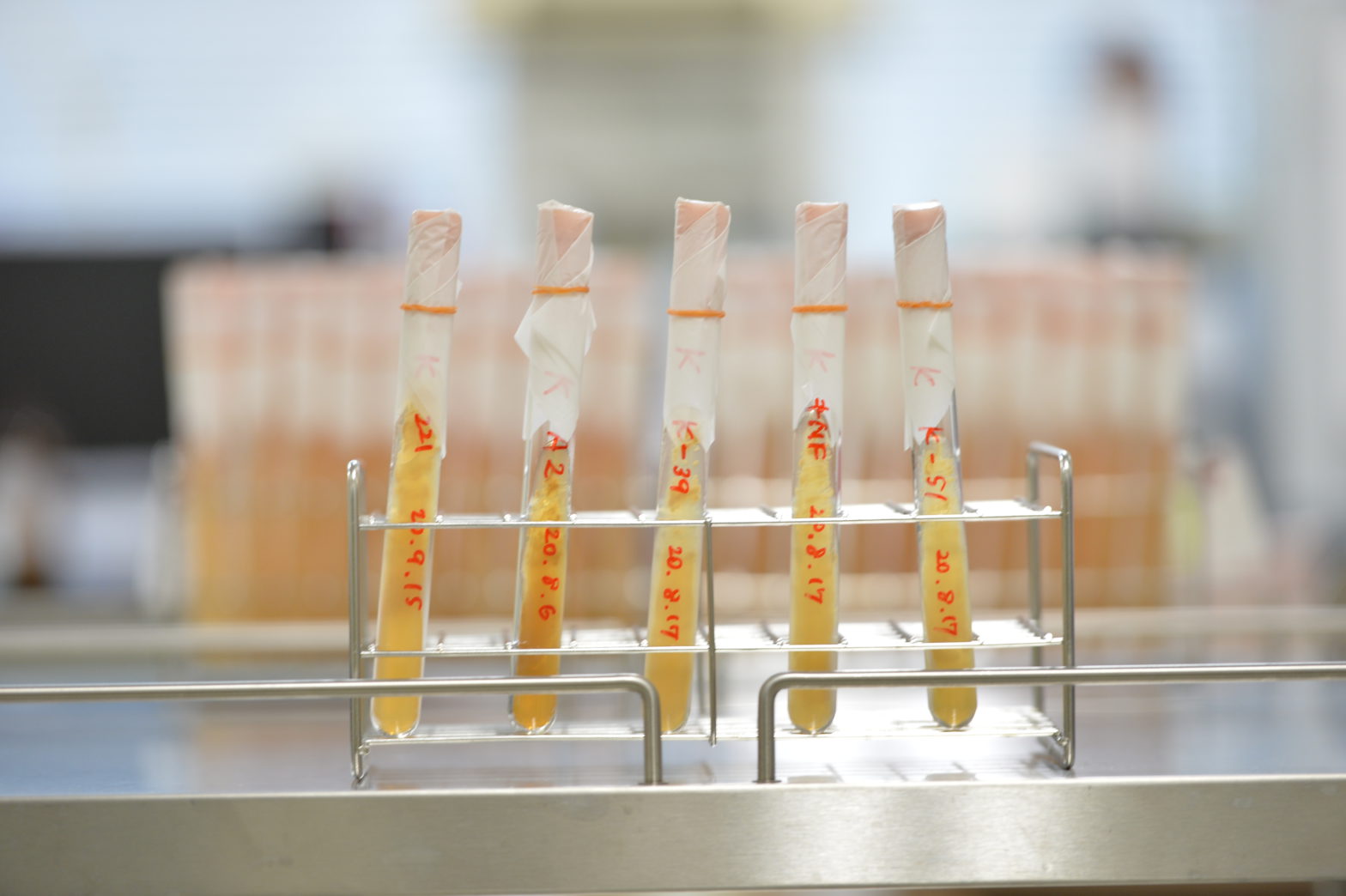Head of the Research Department at Kyoto Municipal Institute of Industrial Technology and Culture (KMIITC), Dr Dr Kiyoo Hirooka was kind enough to grant Sake Experience Japan an interview about their new yeast developed for warm sake. This project started in 2014 in response to Dr Hirooka’s long-held concern about the decline of warm sake. Over the previous 20 years, there had been an almost constant decrease in sake consumption in Japan. Additionally “warm sake” had been considered “old fashioned” and inconvenient to serve, in contrast to the standard means of serving it in other countries.

Dr. Hirooka told Sake Experience Japan “The most attractive aspect of warm sake is that it reflects the locality. Most regions have a custom of drinking sake in warm, so warm sake carries the characteristic of the locality.
One of the important elements which make warm sake appealing is succinic acid which loses its roughness when it is warmed to over 40℃. Honjozo, often served warm, contains more than the usual amount of succinic acid, in contrast to popular Junmai-ginjo and Ginjo style sake, which have a higher malic acid content. In addition, glutamic acid is one of the most well-known amino acids which provide the umami taste of sake, and a lot of glutamic acid-producing yeast varieties had already been developed.

On the basis of his belief that succinic acid has a greater impact than glutamic acid on umami, especially when the sake is warmed, Dr. Hirooka commenced research to develop yeast that would produce a higher, balanced, proportion of succinic acid.
First of all, he analyzed all of the laboratory’s yeast strains and identified one which could produce more succinic acid. Sake yeast comes in two varieties, “bubble-forming” and “non-bubble-forming”. This is somewhat of a misnomer since both varieties make bubbles. The difference is the structure of outside of the yeast. When bubbles are formed by hydrophobic “bubble-forming yeast”, yeasts are captured by the bubble and disperse into the air, reducing the capacity for fermentation, making the tank dirty, and reducing efficiency. However “non-bubble-forming” yeast was much more preferable for brewers at that time: its hydrophilic outer means yeast is not captured by the bubbles and does not disperse.
Dr. Hirooka needed to develop a yeast with hydrophilic features of “non-bubble-forming” yeast and the greater production of succinic acid of “bubble forming” yeast. Aside from succinic acid production, the other major redeeming characteristic of “bubble forming” yeast was that the bubbles were used as a measure of the volume of fermentation. Since the development of an alternative fermentation measurement method, “bubble forming” yeast’s attractiveness to brewers became almost obsolete. Over the course of a year, he examined 200 potential varieties of high succinic acid production “non-bubble-forming” yeast and developed the most promising.

Two classes of sake (Honjozo and Junmai) produced using this new yeast was launched by Saito Sake Brewery in autumn in 2017. Dr. Hirooka recommends that warming the sake to 44-47℃ would be perfect. With this new strain, Kyoto boasts three original yeasts: as “Kyo-no-koto”, “Kyo-no-saku” and now “Kyo-no-haku”.
We foresee exciting cooperation of industry and government to take a scientific approach to develop new styles of sake which the most of local Kyoto components, Iwai sake rice and “Kyo-no-kagayaki”.

